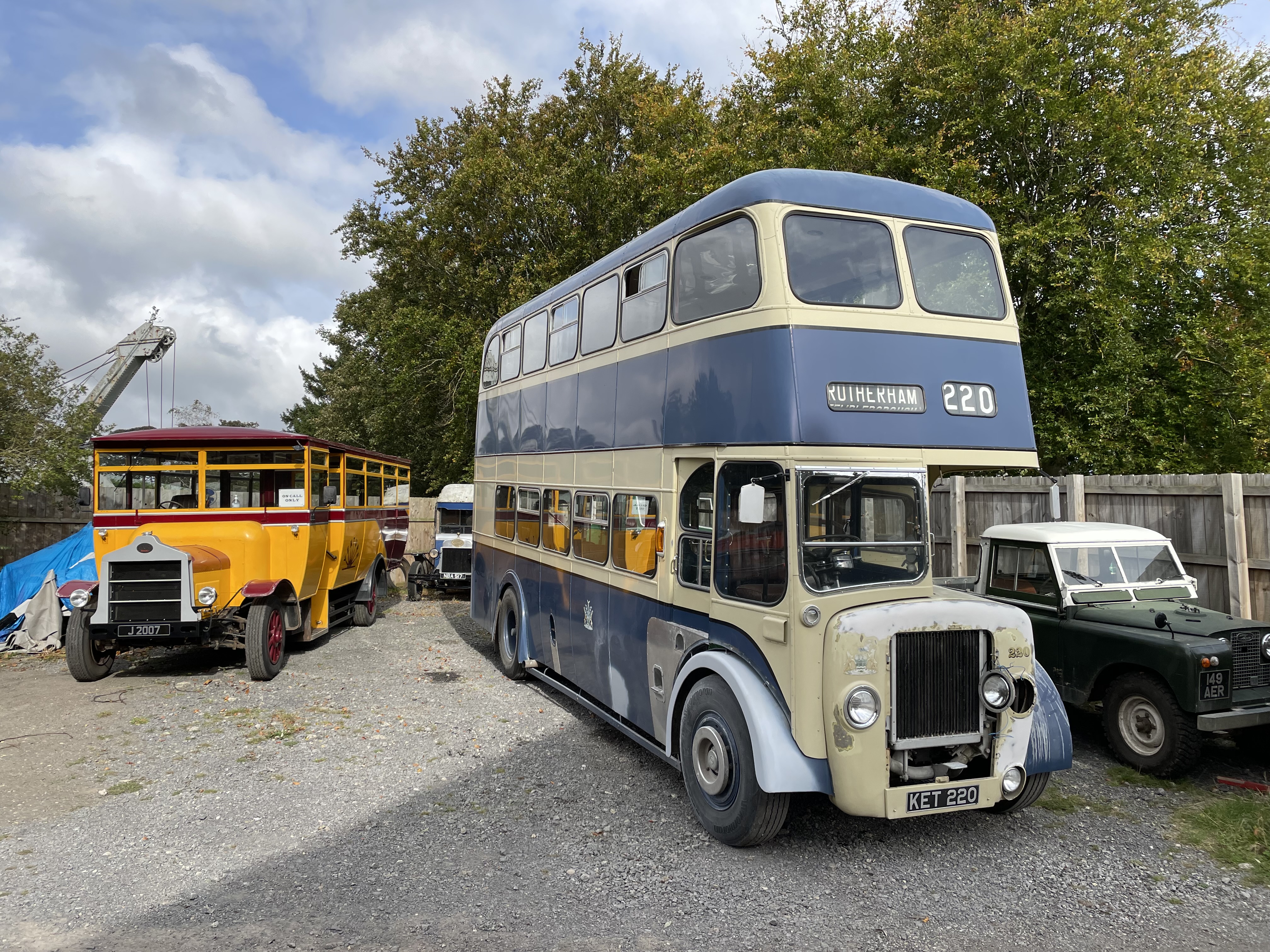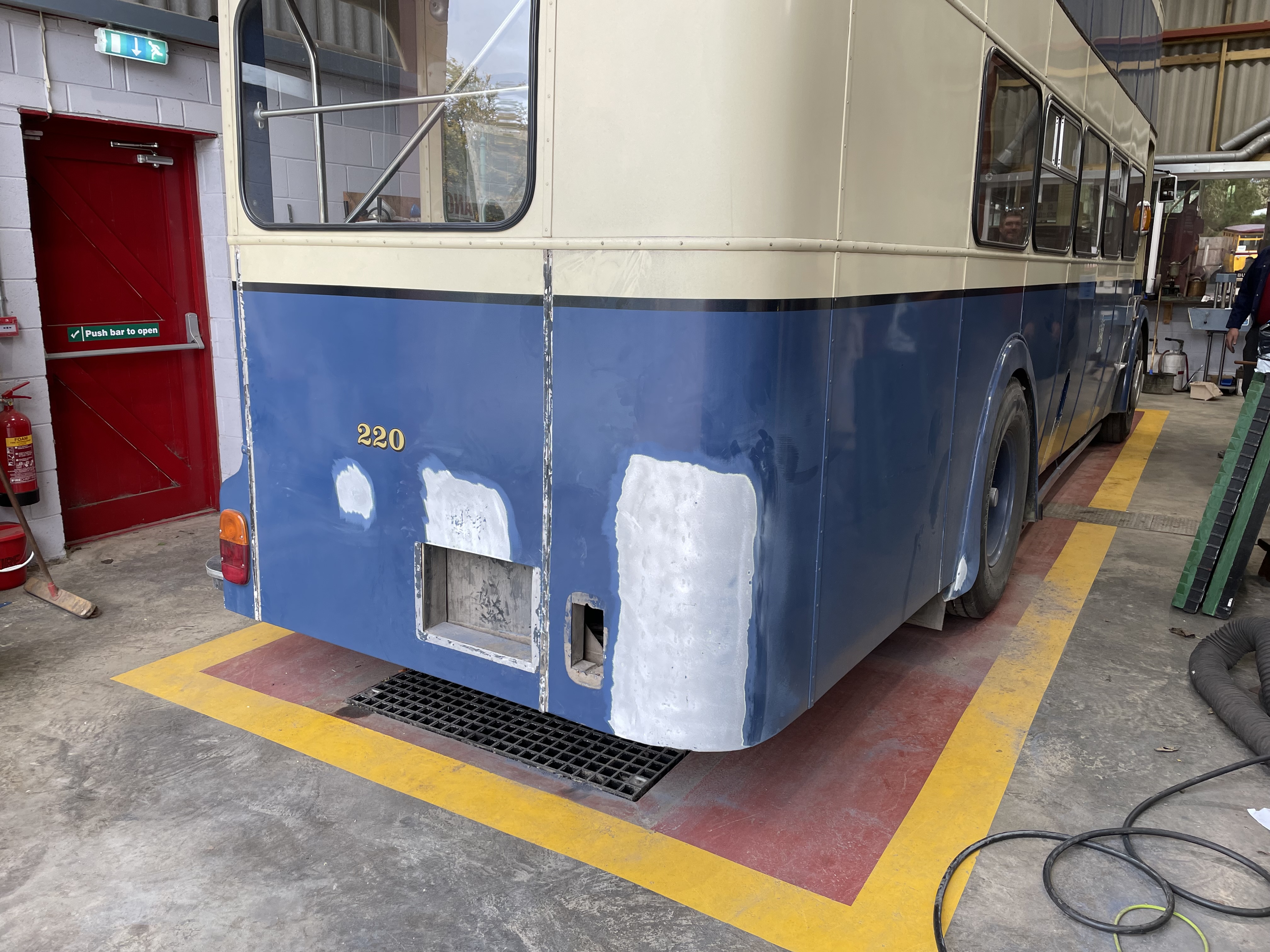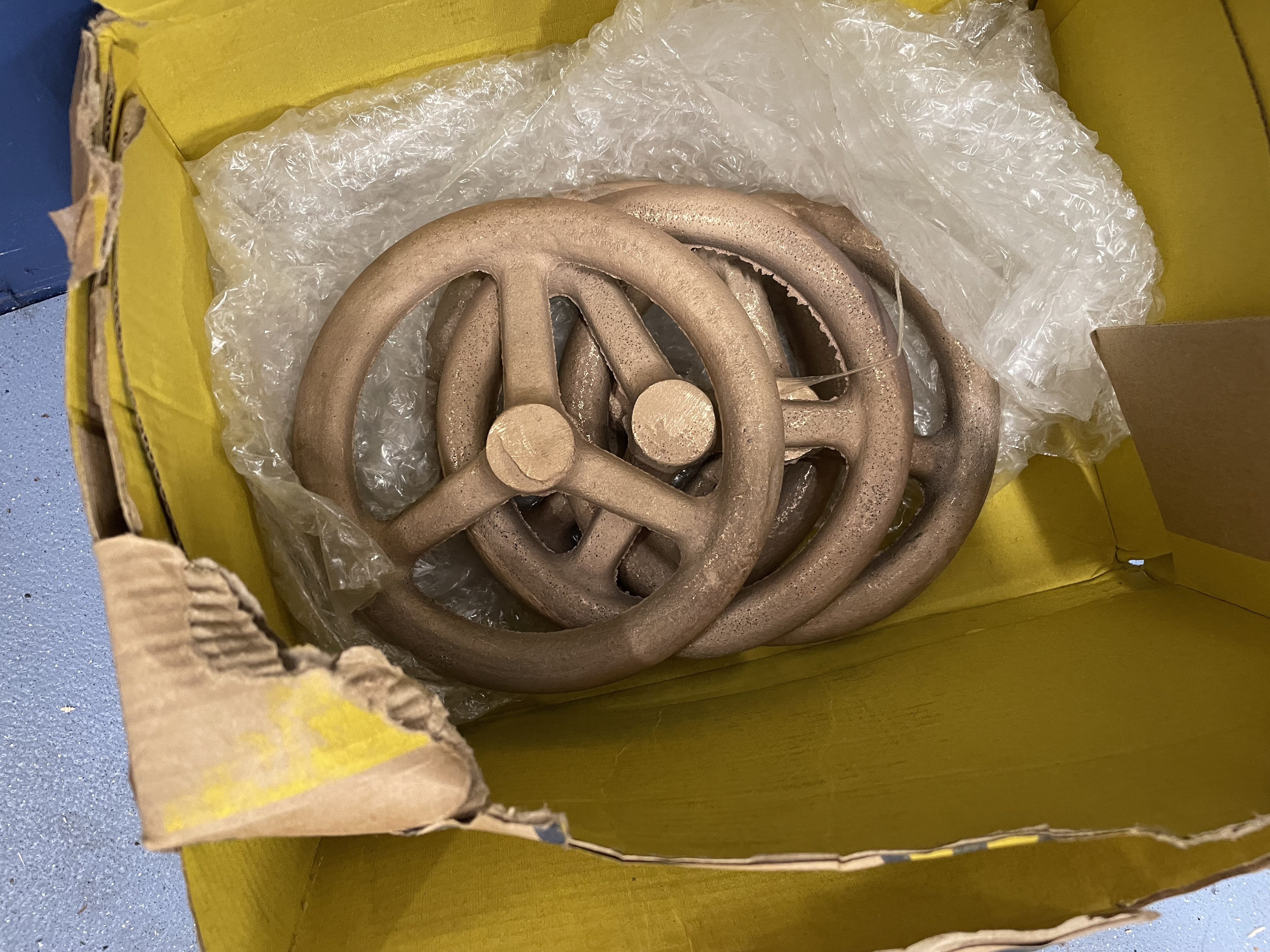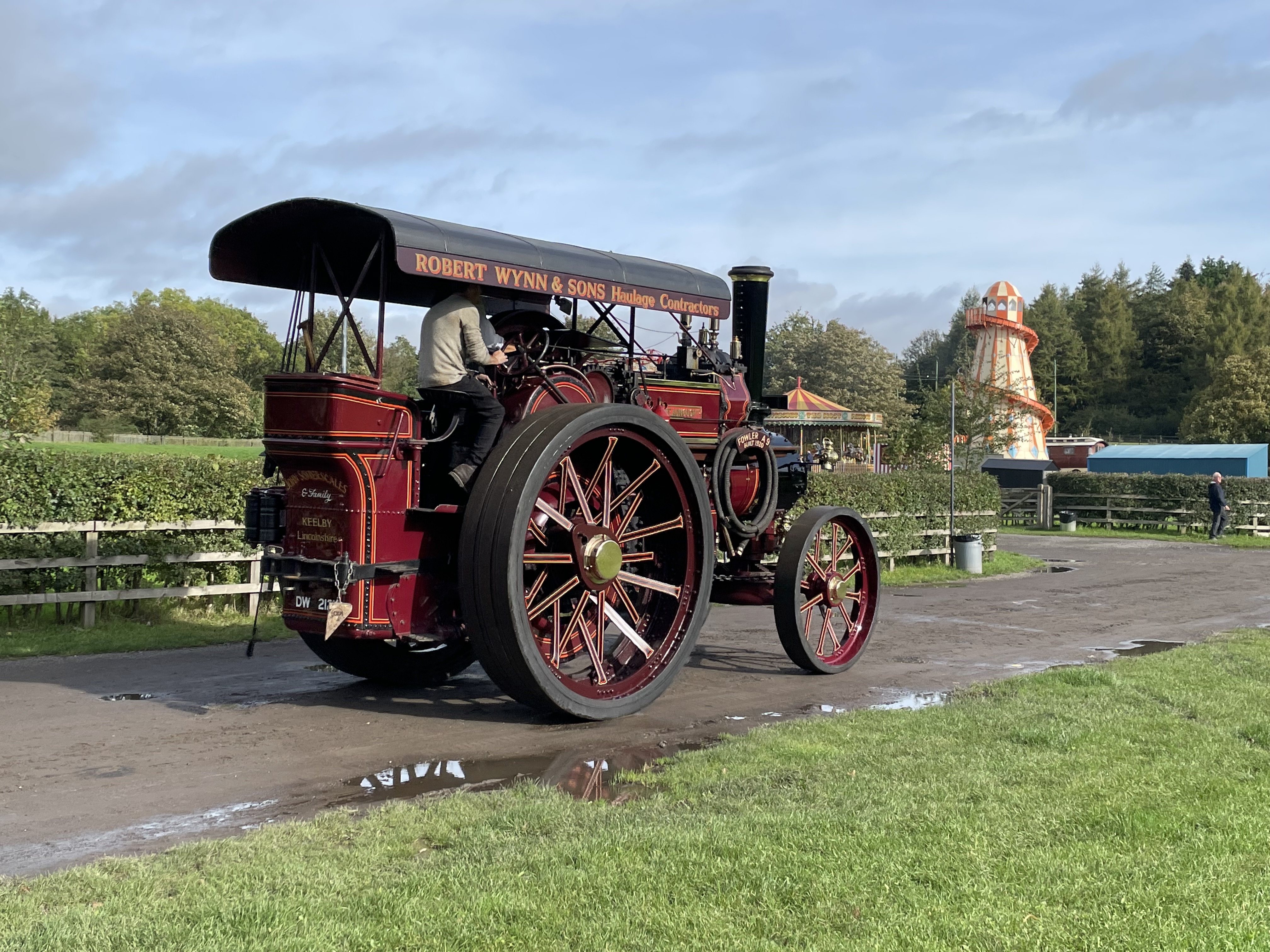
T&I News 17 2023…
It has been a while since I sat at the keyboard to write a blog post! A combination of things have conspired to reduce the blog output lately, in part the ongoing work to modernise the machine shop has reduced the reportable work, there has been a considerable amount of work taking place with regard to the museum’s insurance policy that I have been involved with, and then I caught COVID-19 (like many of my colleagues!). We’ve also had a round of recruitment, that will see the engineering team begin to regain its strength – including two fitter machinists and a PCV technician. The focus for the next few months is to complete the machine shop, progress a cycle of work on the bus fleet, mothball the steam fleet for winter and concentrate on Gateshead 10’s mechanical overhaul. I’ve updated our departmental strategic plan, and there are some behind the scenes developments that should see the tram fleet bolstered for the 2024 season, enabling us to carry out some targetted overhaul/renewal works, rather than simply fix the tram in worst condition. More on this will be revealed as and when this plan begins to bear fruit this winter.
Rotherham 220
All the way back in May 2025, we took on loan, for later purchase, Rotherham 220. The bus is a 1954-built Daimler chassied CVG6, with coachwork by Weymann. It served Rotherham until 1984, latterly as an advertising vehicle. In 1987 it entered preservation, ultimately being extensively restored by David Taylor.
Initially, it was anticipated that 220 would be lightly used, in association with promoting the forthcoming construction of a 1950s urban area here at Beamish, but very quickly it became apparent that it would become a very useful vehicle for the tramway department, who were then only operating buses on the Colliery service and for assisting visitors with access requirements.
The arrival also saw a move towards having all drivers holding PCV competency, and the employment of Russell, bringing with him the appropriate VOSA qualifications for PCV inspection. Before this, we had managed with drivers holding minibus licences – adequate for the replicas, but not suitable for the new fleet of vehicles that we were gathering that were built as buses (we were already embarking on the Crosville 716 project around this time too). 220, with it’s pre-selector gearbox required additional training, but soon proved to be a very popular bus for drivers – as it remains today.
The tramway operation peaked at around 24,000 miles per annum, which fell off after COVID-19, and as we developed the bus service around the museum. With a growing fleet, regular visiting vehicles and an increasing annual mileage, the buses are probably covering something like that old tramway mileage, though the hub-odometers will allow us to get a more accurate picture once they’ve completed 12 months in use.
So, with 220 having accumulated many thousands of miles in service at Beamish, Russell has pulled it out of use to enable some heavier maintenance work to be carried out. This will include mechanical work on the gearbox seals, cosmetic repairs and a repaint. In this view, the front end (looking rather brutal without the Daimler grill in place) has been repaired and various dents pulled out and then filled.
Below: One of the recent cohort of recruits, Tony, turned out to have past experience in coachwork, and he is being borrowed for a number of days a month to progress the cosmetic works on 220, pulling dents out, rather than just filling them. He has carried out a lot of work on the lower deck, with the next challenge being work on the front dome (always vulnerable areas for double deckers) which he will tackle next.
Below: Some damage to the rear panel has also been repaired. Once Tony has completed the cosmetic repairs, and Russ has carried out the mechanical work (with our new PCV Technician, Ben), then the bus will go down to Gardiners at Spennymoor for painting. David Taylor has a spare set of crests and legal lettering to complete the job. We anticipate 220 being back in service early in 2024.
NER 559
Below: Pending a meeting on the next stage of procurement for 559, and a revision of the timescale for construction, a few items have been purchased for the project, including these valve handles (to be fitted to proper valve bodies in due course – an attempt to make sure that the locomotive’s exposed backhead has an appropriate look to it).
Other bits and pieces…
Below: In early October we had a second, impromptu, steam gala. This had been planned to host engines that were on the reserve list from April and September, but in the end, became an event in itself, albeit fairy short-notice. I didn’t take many photos – but here are two to record the occasion.
Below: Coffee Pot No.1 visited the Tanfield Railway last weekend for their gala, where it made what was probably it’s longest single journey (East Tanfield to Marley Hill). Whilst at Tanfield it has been turned, as it always runs better tank-first, and the prevailing gradient favours this orientation when running towards the screens – i.e. the opposite of the view below. The loco will be winterised shortly, but will be back in 2024, for its 153rd year… The Waggonway/narrow gauge ops finish on the 5th November, after which the pool of locomotives will be prepared for their annual examinations by the boiler inspector, and winterised.













Thank you for the recognition. I’m really enjoying working on 220 using the skills I was taught and trained for at a young age and continued to develop over my years in the motor trade. Thank you once again for the opportunity and the belief that Russell and yourselves have put in me. I promise I will do my best and hopefully not disappoint.
Sorry to hear about you having COVID-19 Paul, I hope that you’re feeling much better now. The transport team seem to have had a few challenges lately and its to your credit that the wheels keep on turning!
I’m quite intrigued and excited by your comments about the tram fleet. I think its quite understandable that you have been putting increased emphasis on buses, but there is nothing quite like a vintage tram experience and I’m very pleased that it sounds like steps are being taken to strengthen the fleet again. Here’s hoping that 2024 will be a better year for the heritage tram scene, both at Beamish and elsewhere, after a very challenging few years!
Hiya tony i was wondering if the planned colour scheme will be the blue and yellow of TWPTE
Hi Daryl
220 will be repainted into the same livery as is currently carried, this being a repair and refresh of the current appearance.
Best wishes
Paul